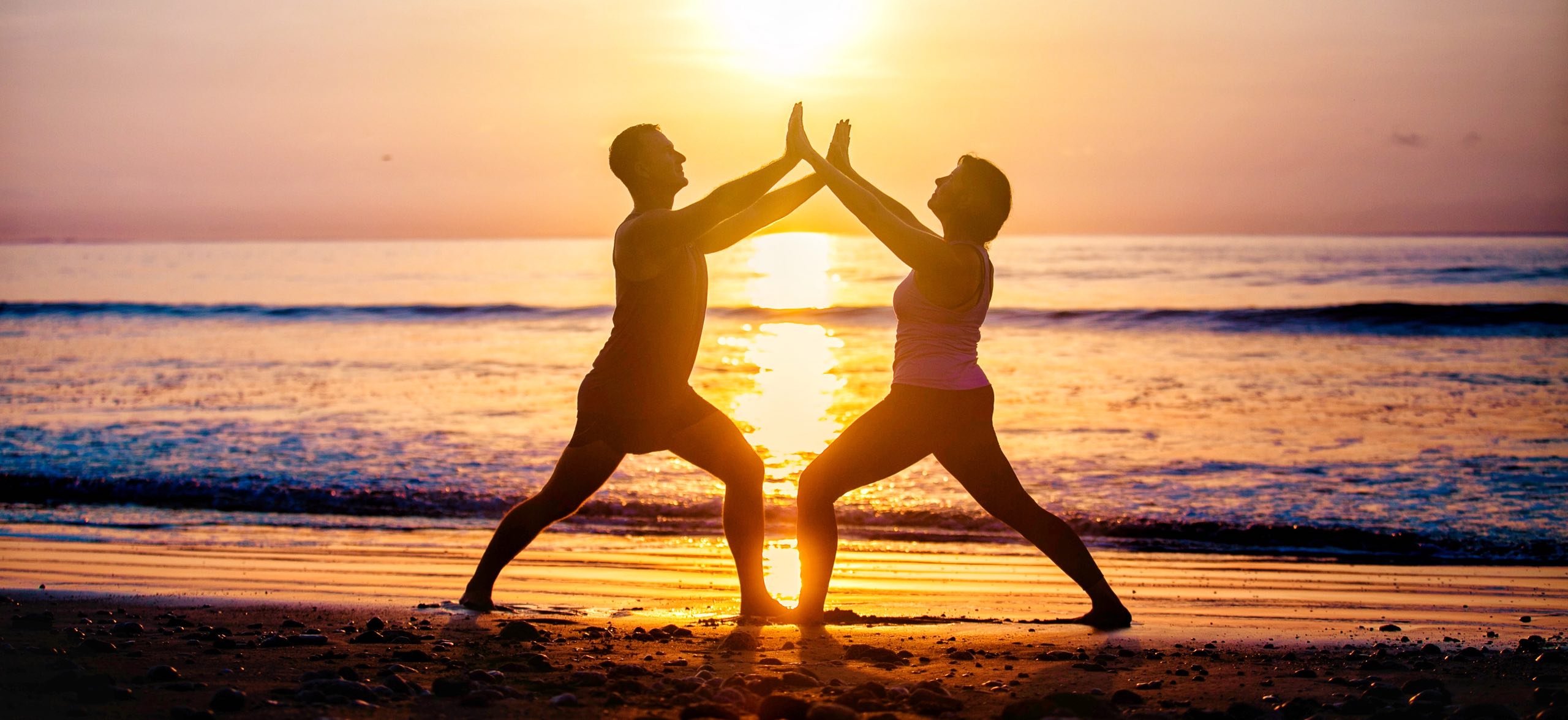Not only does yoga unite your body and mind, but it can also bring you closer to your best friend, partner, or a family member. Yoga has the ability to bring people together by practicing poses that help build communication and intimacy. Practicing yoga with a loved one helps you better sync with that person as you work on finding a rhythm together.
Performing yoga poses for two is a fun and playful way to open yourself up and helps create deeper connections with people. If you are just starting out with yoga and looking for extra encouragement and support, practicing yoga with a close friend or partner can be exactly what you need. In addition, yoga poses for two offers the benefit of getting to spend quality time with another person.
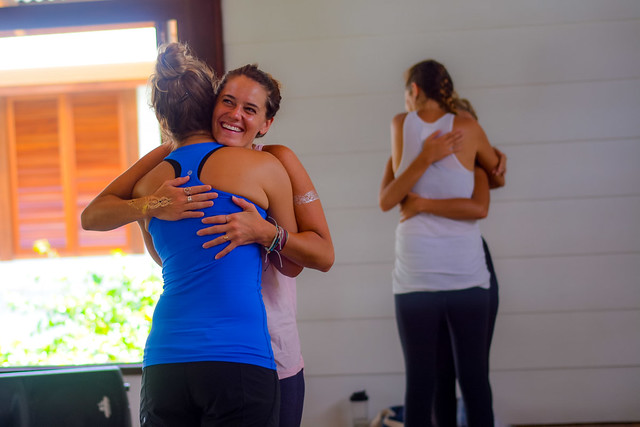
Let us explore the many benefits yoga for two offers. In addition, we will offer up some of the best poses designed for two people that you and your friend or partner can try. So message your bestie or encourage your partner to practice yoga with you, and you will both be on your way to strengthening your relationship as well as your bodies. .
The Benefits of Practicing Yoga with a Partner
Builds Trust
Practicing yoga poses designed for two people means you must rely on someone else to sometimes hold you, support you, and provide you with balance. Many poses can be a bit challenging and daunting, forcing you to trust that your partner literally and figuratively has your back. Performing yoga with another means you often have to give up control which can be a good trait to learn in real life. The trust you build with your friend or partner in yoga will often carry over to your life off the mat.
Allows You to Open Up
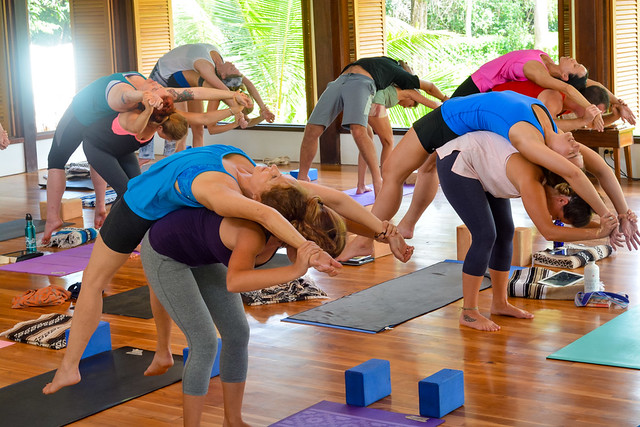
Yoga often forces you into vulnerable positions. Practicing yoga with another means you open yourself up to someone else while being in those vulnerable positions. Those with insecurities such as body image issues can learn to accept and love their own bodies by opening them up for others to see in detail. Yoga with a friend or partner also offers you both to be present in a relaxed setting where you can learn to laugh and not take life so seriously.
Creates Intimacy Through Touch
Practicing yoga with another can be intimidating for some in the beginning, as it involves a great deal of close contact and touching. Touch is a strong component of developing close connections with people, and yoga for two can help you increase your awareness of each other by way of touch. Performing yoga with another person forces you to focus on each other’s breath, body, and movements which can create a harmonious bond between you both. For couples, the touching you experience in yoga can lead to a greater sense of intimacy which can transfer to other areas of your relationship and help you create more of an emotional connection together.
Creates Shared Memories & Strengthens Bonds
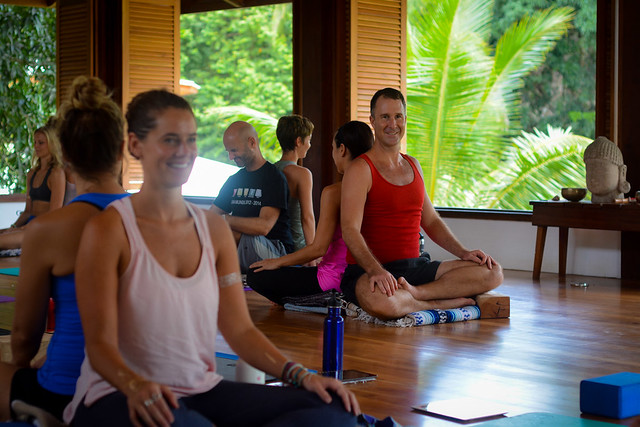
Just as vacations and other activities can bring you closer to loved ones, so too can performing yoga together. Yoga is a light-hearted activity that will allow you both to smile while helping you both boost your physical and mental health. Yoga provides a relaxed atmosphere that makes the time you share with your friend or partner much more enjoyable and memorable. Additionally, many of the yoga poses you will perform together require you to build a solid foundation with your bodies and in turn this will help to further strengthen your relationship’s foundation.
Provides Physical and Emotional Support
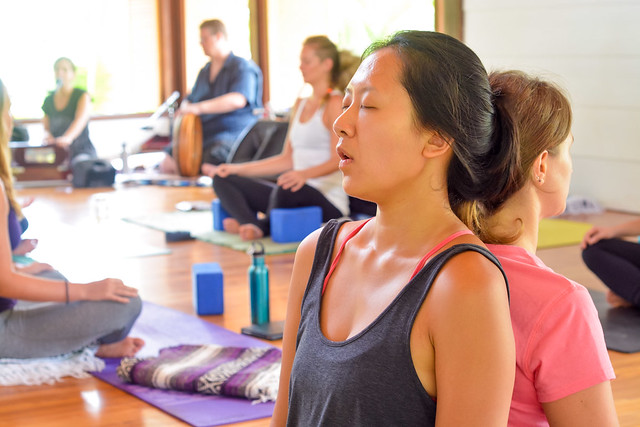
Although we may be well aware of the many physical and mental benefits of yoga, it can be daunting to dive into it alone. Deciding to start out practicing yoga with someone else can help give you the extra motivation and support needed to make yoga a part of your daily or weekly routine. We tend to accomplish far more when we learn to support one another. Yoga for two helps you and your partner create a harmonious balance that is achieved by supporting each other. Recognizing how this support provides positive results, you will be more willing to provide and receive support in other aspects of your life.
[et_bloom_inline optin_id=”optin_16″]
Best Poses Designed for Two People
Double Boat Pose
The Double Boat Pose is performed in a seated position facing your partner. You will create a v-shape with your body, where your head and feet are raised off the floor. You and your partner’s feet will meet to form a triangle, and you will keep yourselves upright by holding hands. You will start with bent knees and attempt to straighten your legs as much as possible while also keeping your spine straight. This pose really stretches the hamstrings.
Double Tree Pose
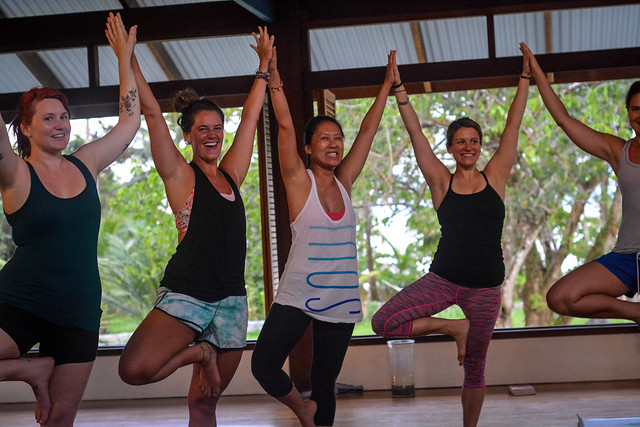
A great pose for improving balance, the Double Tree Pose can be performed face to face or with you and your partner facing the same direction. Choosing to stand side by side, you will want you and your partner’s feet to be roughly 8 inches apart. Place your arm that is closest to your partner around their waist as you bring your hips together. Next, you will both raise each of your outside legs off the floor and place that raised foot flat upon the inside of your own thigh. You and your partner’s outside hands can now come together in a prayer posture, which you may wish to raise above your head for a greater stretch.
Partner Seated Twist
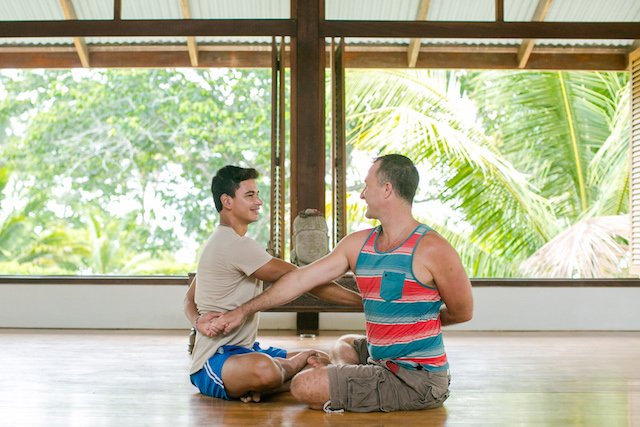
A great beginner pose to try with your partner is the Partner Seated Twist. It is an easy to navigate pose that stretches your upper body. Sit with crossed legs so that you and your partner are facing each other. Take a deep breath as you lift your arms overhead. As you exhale, you will both begin to twist your bodies to the left. Your right hand will be brought towards the outside of your partner’s right torso while your left hand should reach around your back. Grab each other’s hands and pull gently for a deeper twist. After you both hold the pose for around 5 breaths, you can do the same actions in the opposite direction.
Double (or Triple) Downward Dog
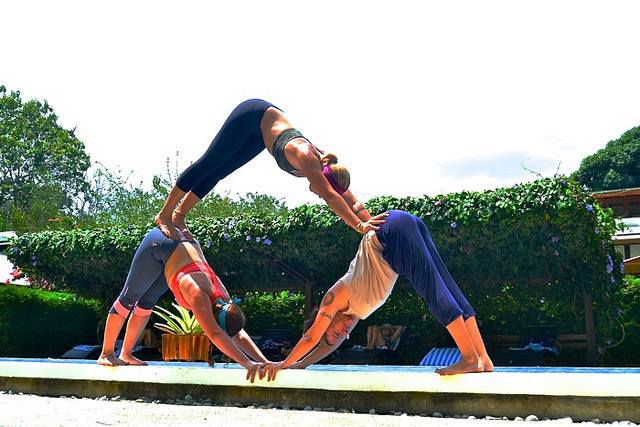
One of yoga’s most practiced and iconic poses, the Downward Dog can be modified to include you and a partner. The Double Downward Dog involves you both starting in the Downward-Facing Dog position, one directly in front of the other facing in the same direction. The person in front will then walk their feet and hands back and proceed to step up along the back and rest their feet upon the back of their partner’s hips. Once you are both in a stable position, hold the pose for 5 breaths. Come out of the pose by having the person in front walk forward, gently stepping off the back of the partner behind. Switch positions with your partner.
Double Plank Pose
Develop a stronger core by trying the Double Plank Pose with your partner. You will each create a planking stance, one on top of the other, which will create a box-like shape. One partner begins by getting in the plank position. The other partner will then get into the plank position on top of their partner, where their feet will rest on their partner’s shoulders and their hands will grip their partner’s heels. The person on the bottom will have to maintain the plank position with the added extra weight of their partner, and should, therefore, have the strength and confidence to do so. Take the pose slowly at first and after a bit of practice, you will both create a rock solid structure.
Do you practice yoga with a partner? Let us know your favorite yoga pose for two in the comments below!
Pin It For Later!
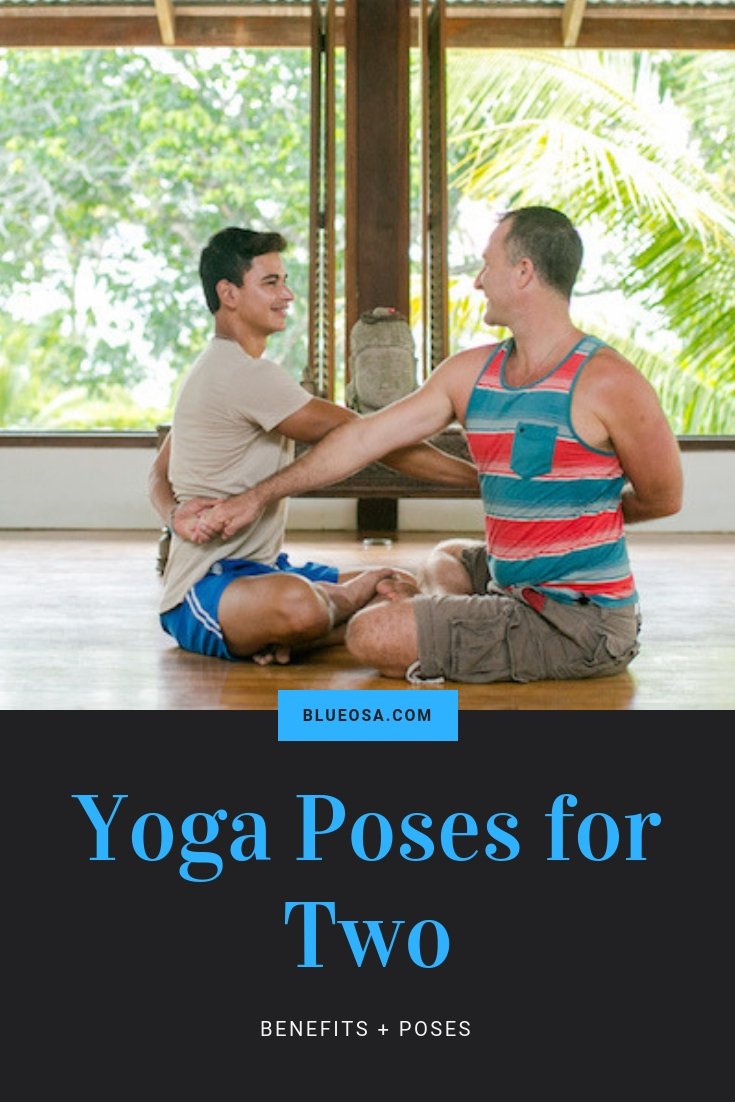
About the author:

Casey Siemasko is a content marketing consultant, travel blogger, and wandering yogi. An entrepreneur at heart, she is the co-founder of the award-winning travel blog A Cruising Couple. Besides yoga and travel, she enjoys wine tastings, being outdoors and taking on new hobbies. Follow Casey on LinkedIn and Google+.
Follow Casey:


